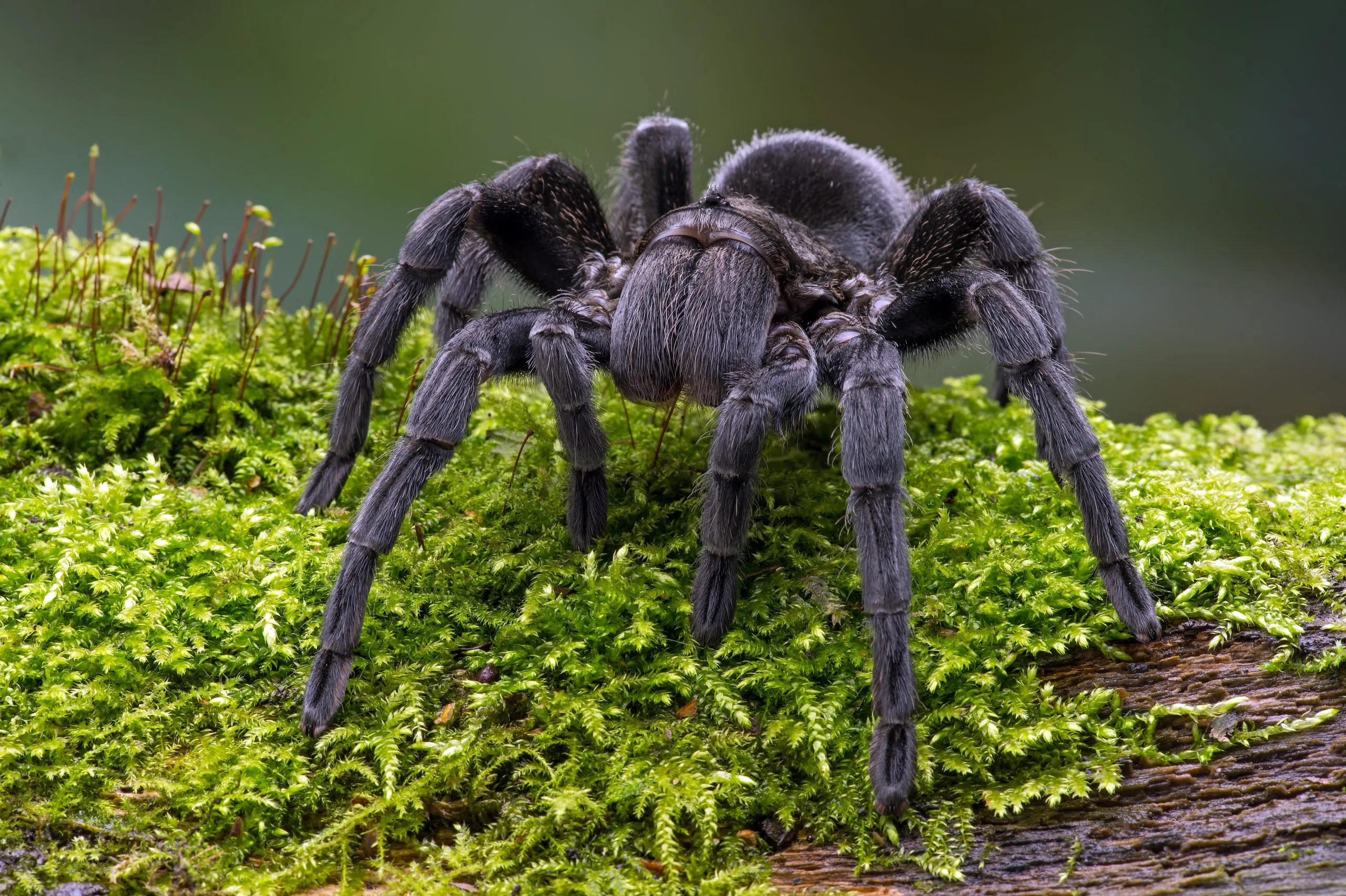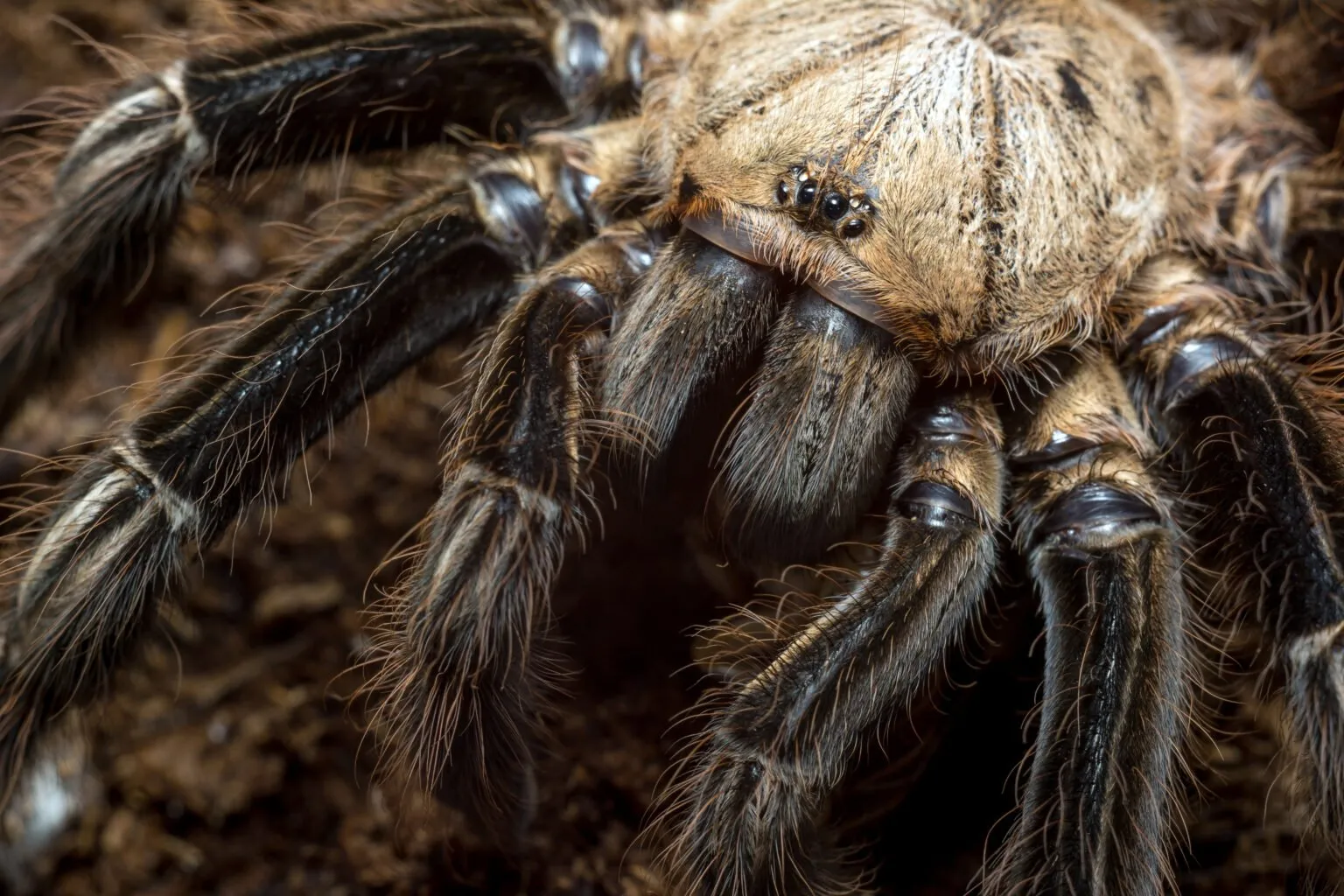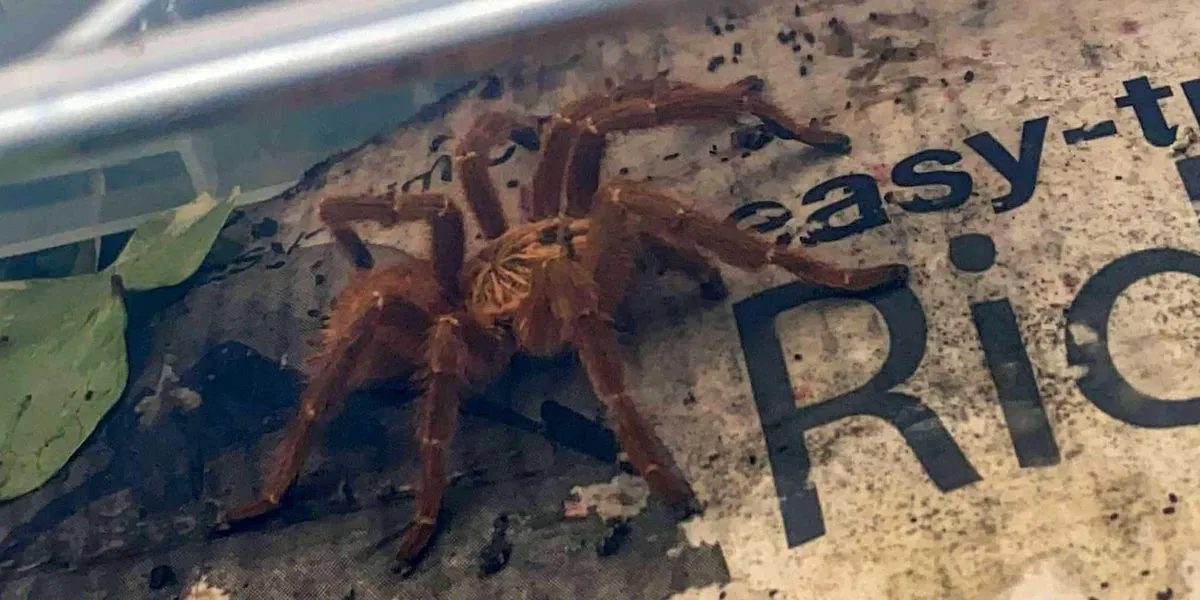What is the Biggest Tarantula Ever Recorded?
The world of arachnids is home to some truly impressive creatures, and none is more imposing than the Goliath Birdeater (Theraphosa blondi). This colossal spider reigns supreme as the largest tarantula species on Earth, a title it holds due to its impressive size and weight. Its sheer size is enough to make even the most seasoned arachnophobe take a step back. These giants of the spider world are not only fascinating from a biological perspective but also represent a testament to the diversity and wonder of the natural world. Understanding the Goliath Birdeater and the factors that contribute to its massive size allows us to appreciate the remarkable adaptations that have allowed this species to thrive in its environment. Join us as we explore the captivating world of the Goliath Birdeater, uncovering facts about its size, habitat, diet, and overall uniqueness.
The Goliath Birdeater
The Goliath Birdeater is a sight to behold, with a leg span that can reach up to 12 inches (30 centimeters), making it larger than a dinner plate. This impressive size is a direct result of the species’ unique evolutionary path and the environmental factors influencing its development. These spiders have adapted to their surroundings and have become the largest tarantulas in existence, due to factors such as abundant food sources and the absence of significant predators. Observing a Goliath Birdeater in its natural habitat is an unforgettable experience. Their sheer size is a testament to their successful adaptation within their ecosystem. But these creatures are not just giants; they are also incredibly interesting creatures, that provide researchers with valuable insights into the behavior and biology of spiders.
Size and Weight

When it comes to size, the Goliath Birdeater truly lives up to its name. While the average leg span of these tarantulas can range from 10 to 12 inches, some individuals have been recorded with even larger measurements. The weight of these spiders is equally impressive. Adult females can weigh over 6 ounces (170 grams), rivaling the size and weight of some small mammals. The sheer size of the Goliath Birdeater isn’t just about impressive numbers; it also has implications for their behavior and ecology. Their size allows them to prey on larger animals, and their movements are often slower compared to smaller spider species. These giants have made their mark on the spider world, with their ability to become such an imposing figure, leaving a lasting impression on anyone who encounters them.
Where do they live?
The Goliath Birdeater’s habitat is primarily confined to the rainforests and swamps of northern South America, including countries like Brazil, Venezuela, Guyana, Suriname, and French Guiana. These environments are ideal for supporting such large arachnids. The warm and humid climate provides the perfect conditions for the tarantulas to thrive, with plenty of moisture and stable temperatures being very important for their well-being. The diverse vegetation of the rainforests provides ample cover and camouflage, allowing them to ambush prey effectively. The presence of these spiders in the rainforest is a testament to the rich biodiversity of these ecosystems. These locations are crucial for the survival of the Goliath Birdeater and other unique species of flora and fauna. Conservation efforts are necessary to protect these precious habitats and ensure the long-term survival of the Goliath Birdeater and the ecosystems it calls home.
Habitat and Distribution
Within their native range, Goliath Birdeaters can be found in a variety of microhabitats. They typically inhabit burrows in the ground, often near swamps or in areas with high humidity. These burrows provide shelter from the elements and protection from potential predators. The spiders may also be found under rocks, beneath tree roots, or in other secluded spots. The distribution of the Goliath Birdeater is influenced by factors such as food availability, climate, and the presence of suitable nesting sites. As the rainforest is impacted by deforestation and habitat destruction, the Goliath Birdeater’s population and distribution are increasingly under threat. Protecting these diverse habitats is crucial for preserving the natural environment.
What do they eat?

Despite their name, Goliath Birdeaters don’t primarily eat birds. While they have been observed preying on small birds on occasion, their diet mostly consists of insects, worms, and other invertebrates. They are opportunistic predators, and they will consume whatever prey they can overpower. Their size allows them to take down larger prey than most spiders, including small rodents, lizards, and even snakes. The Goliath Birdeater’s hunting strategy is a combination of stealth and brute force. They lie in wait for prey near their burrows, ambushing anything that comes within reach. They inject venom into their prey with their fangs, which immobilizes the victim and begins the digestion process. This shows how the Goliath Birdeater has established itself at the top of the food chain.
Diet and Feeding Habits
The Goliath Birdeater’s diet varies depending on its size and the availability of prey. Juveniles typically feed on smaller insects, such as crickets and mealworms. As they grow, their diet expands to include larger prey items. They are capable of consuming a wide range of animals, including frogs, toads, and even small mammals. When hunting, Goliath Birdeaters use their sensitive hairs to detect vibrations and movements. They then launch a surprise attack, injecting their prey with venom that breaks down the tissues for easier consumption. The ability to consume such a variety of prey allows the Goliath Birdeater to survive and thrive in its environment, acting as a key player in the local food web.
Lifespan and Growth
The Goliath Birdeater has a relatively long lifespan for a spider. Females can live for up to 25 years in the wild, while males typically have shorter lifespans, living for around 3 to 6 years. The growth of these spiders is a gradual process. They molt periodically as they grow, shedding their exoskeleton to allow for further development. Molting is a vulnerable time for the spider. During this period, they are susceptible to predators. The growth rate of Goliath Birdeaters depends on factors such as food availability, temperature, and humidity. Providing a secure environment is crucial for ensuring the spiders can thrive and reach their full potential. The life cycle and growth of the Goliath Birdeater are fascinating aspects of its biology, offering insights into its adaptation to its environment.
How long do they live?

The longevity of the Goliath Birdeater is a testament to its ability to adapt and survive in its environment. Females’ long lifespan reflects their role in reproduction and the need to endure for many years to lay eggs. The male’s shorter lifespan is due to the demands of mating and the risks they face during this time. The lifespan of the Goliath Birdeater demonstrates the balance between reproduction and survival. The long lifespan of females ensures that the population of these spiders continues, allowing them to adapt to changes in their environments.
How to Identify a Goliath Birdeater?
Identifying a Goliath Birdeater is fairly straightforward due to its unique characteristics. The most distinctive feature is, of course, its size. The leg span of an adult Goliath Birdeater can reach up to 12 inches, making it significantly larger than most other spider species. They have a robust body, covered in reddish-brown hairs that give them a somewhat intimidating appearance. Their fangs, or chelicerae, are large and powerful, used for capturing and subduing prey. Their legs are covered in sensory hairs that allow them to detect movement, vibrations, and changes in air pressure. The Goliath Birdeater also possesses prominent spinnerets, which it uses to produce silk for its burrow and to wrap prey. All these characteristics come together to make a spider that is instantly recognizable and unforgettable.
Physical Characteristics
In addition to their size, Goliath Birdeaters have several other distinguishing physical characteristics. Their bodies are typically covered in reddish-brown hairs, which can range in color from light tan to dark brown. They possess large fangs, or chelicerae, that are used to inject venom into their prey. The Goliath Birdeater’s legs are covered in fine hairs that help them detect movement and vibrations, while their spinnerets are used to produce silk. These features play a significant role in their survival, helping them navigate, hunt, and protect themselves in their natural habitat. The combination of their size and other unique physical characteristics makes the Goliath Birdeater an incredibly recognizable and formidable creature.
In conclusion, the Goliath Birdeater is a remarkable species that continues to capture the imagination of nature enthusiasts and scientists alike. From its impressive size and weight to its unique adaptations and behaviors, this tarantula is a true giant of the spider world. By learning about the Goliath Birdeater, we can gain a deeper appreciation for the biodiversity of our planet and the importance of conservation. As we continue to explore and understand these creatures, we are reminded of the wonders of the natural world.
